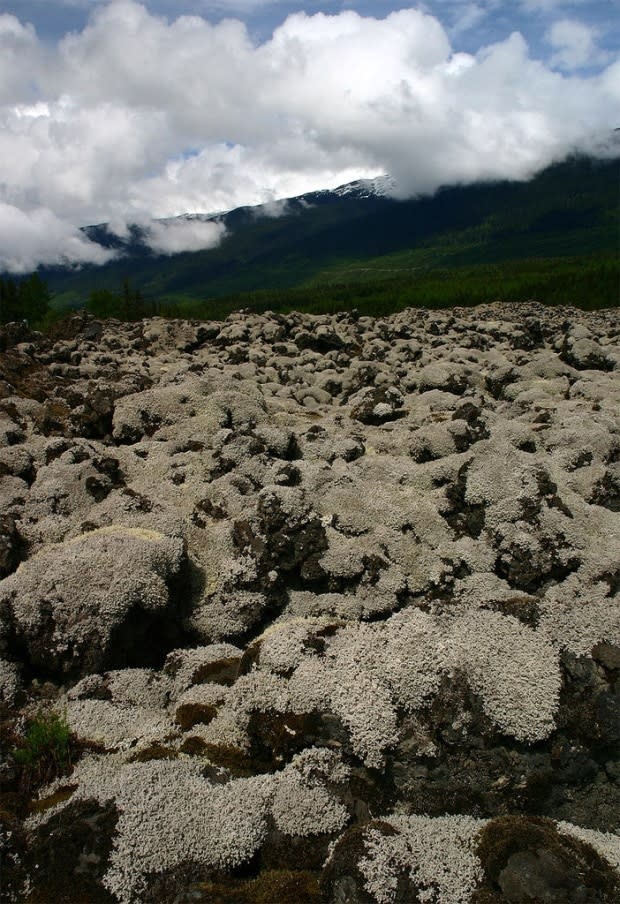Nisga'a knowledge helps scientists create first detailed map of Tseax volcano
A team of B.C. researchers has been able to create the first detailed map of the Tseax Volcano thanks to a combination of scientific data and Indigenous knowledge.
The volcano, located on Nisga'a territory on B.C.'s northwest coast, erupted 250 years ago, making it the second youngest volcanic eruption in Canada. The eruption is believed to have destroyed three villages and to have killed up to 2,000 people.
Researchers from Quest University, Simon Fraser University and the University of British Columbia have been working on the project since 2016, and say one of the key differences in their research compared to others is the use of several generations worth of Indigenous knowledge.
"Those stories gave us a lot of data," researcher Yannick Le Moigne said.
Though the volcano was mapped in 1969, it did not include information about the volcano cone or beds of lava rock; new information from this study shows that the lava plane extends 32 kilometres. When the eruption happened, a large volume of lava flowed quickly, taking out Nisga'a villages along the way.
The map is the just first step in understanding the eruption; Le Moigne said now he will use the maps to learn more about details of the eruption, including how long the eruption lasted and how high the volcanic plume was.
"It's by understanding previous eruptions that we will be able to understand future eruptions," Le Moigne said.
The Tseax volcano is located on a volcanic belt, which stretches 1,200 kilometres to Alaska and contains more than 100 other volcanoes. It will also help researchers understand other eruptions in the area, Le Moigne said.

Though oral histories don't use scientific terms, Le Moigne said the events recorded orally by local First Nations match what typically happens with these types of volcanoes.
Le Moinge, who is from France, said that spending time with the Nisga'a people gave him and his team the opportunity to learn about how they lived before the eruption, and it impacted the way their people live now.
"I think it's very important to include those Indigenous stories," he said.
He said the use of Indigenous knowledge in conjunction with science is a unique practice in North America, but, hopefully, it will influence collaboration between scientific and Indigenous communities in the future.
CBC requested a comment from the Nisga'a Lisims Government, but did not hear back before deadline.

